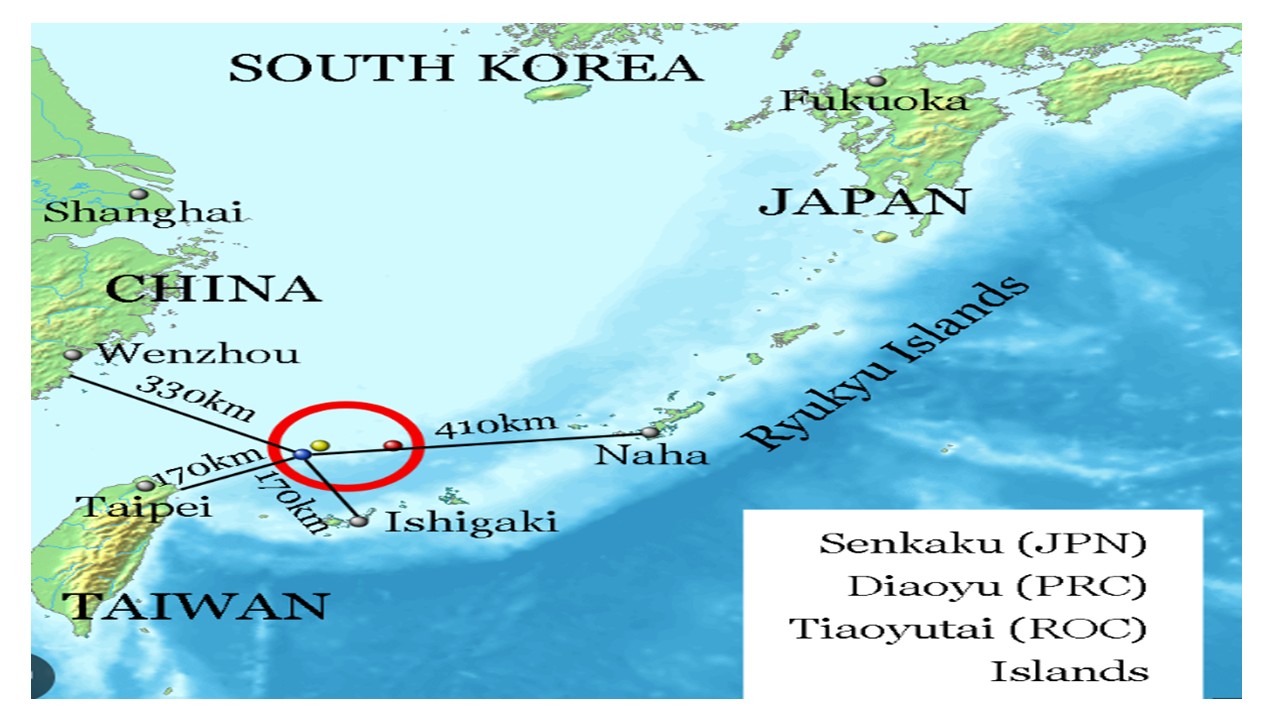Japan/China Tensions Over Taiwan
China wants to make Japan cautious about helping the U.S. in future military scenarios. With PM Takaichi tougher stance, China could decide to escalate tensions to reduce the risk of Japan becoming involved in future years. This could be restrictions of some critical minerals from China to Japan or threats to stop some Japan’s exports to China. However, we do not see any China escalation, as a signal that the near-term risk of naval blockade or invasion is close. We still only attach a 10% risk to a blockade or invasion in 2027.
China has rebuked new Japanese PM Takaichi comments over the scenario of a China blockade on Taiwan. What will happen next?
Figure 1: Map Of Japan and China Islands

Source: Continuum Economics
Japan is under diplomatic pressure from China for PM Takaichi to back down over her comments on the scenario of China navel blockade on Taiwan or any China military action to prevent the arrival of U.S. forces. Takaichi went further than previous Japanese PM’s by indicating such a scenario could mean a survival-threatening situation in which Japan could use military force for defense.
The context is that Takaichi is more pro defense than previous Japanese PM’s, while a blockade of Taiwan could also mean a threat against Japan’s Senkaku islands (Figure 1), which are disputed by China. Additionally, Japan Ryukyu islands extend close to Taiwan (Japan’s tourist popular Ishigaki is only 270km from Taiwan). In the scenario of a China blockade of Taiwan, escalation to a Japan self-defense status is only natural.
China viewpoint is that Taiwan is China only business and that other countries should not interfere or react to any military action. More importantly, China fears that the U.S. strategic ambiguity policy could see the U.S. coming to the rescue to Taiwan in the scenario of a China navel blockade. While this would involve the U.S. navy, the U.S. could ask Japan to use the U.S.’s multiple military bases in Japan Naha island (Figure 1). Japan’s society is reluctant to get involved in the scenario of any China/Taiwan/U.S. war, but PM Takaichi appears to want to allow Japan self-defense and could grant such a U.S. request to us the Naha bases. China thus wants to make Japan cautious about helping the U.S. in future military scenarios. With PM Takaichi tougher stance, China could decide to escalate tensions to reduce the risk of Japan becoming involved in future years. This could be restrictions of some critical minerals from China to Japan or threats to stop some Japan’s exports to China.
However, we do not see any China escalation, as a signal that the near-term risk of naval blockade or invasion is close. We still only attach a 5% risk to an invasion in 2026, both as China military is not ready and it is too high risk for China’s president Xi. Xi decided not to talk with Trump (at the APEC summit) about the U.S. accepting that a future reunification of China and Taiwan is an internal matter. This leaves the U.S. strategic ambiguity policy on the table, while U.S. defense secretary Hegseth earlier in the year was pushing Japan, S Korea and the Philippines to significantly expand military spending to a NATO like 5% of GDP in the face of the threat from China – however this is rejected by these countries. Our baseline is for China to continue its grey warfare against Taiwan (here), especially as Taiwan opposition KMT has elected a more pro-China leader. Additionally, China coastguard and fishing fleet have been involved in exercises this year around Taiwan, which makes military strategists think that a major China escalation would be a temporary coastguard quarantine rather than a more high risk PLA Naval blockade. We attach a 20% probability to coastguard quarantine from 2027 versus 10% for a blockade or invasion (Figure 2).
Figure 2: Taiwan Scenario 2027

Source: Continuum Economics